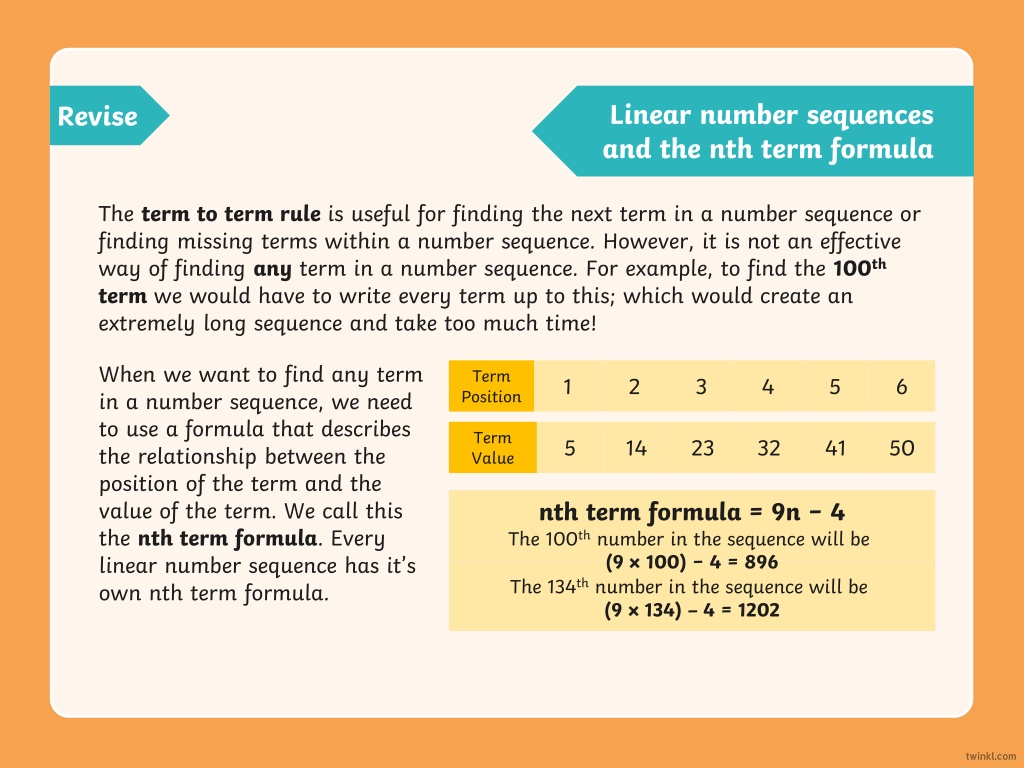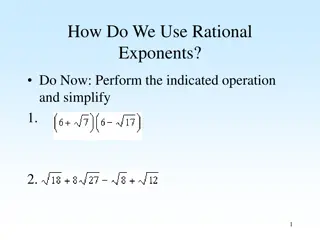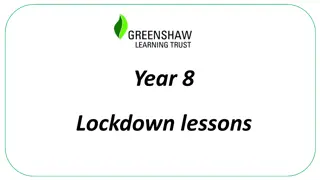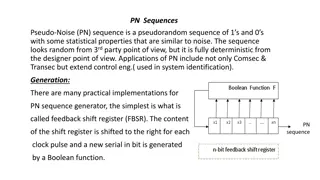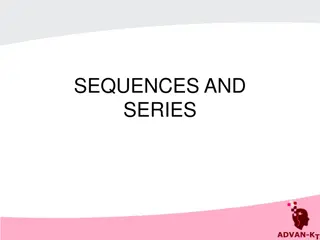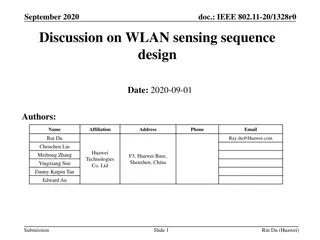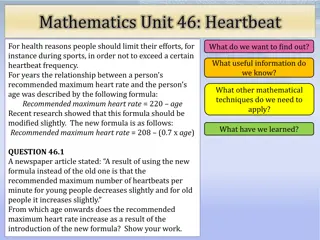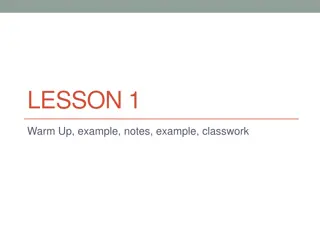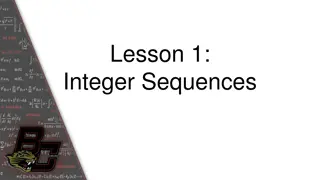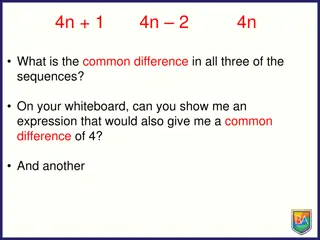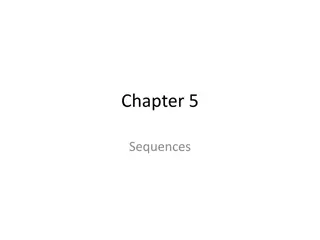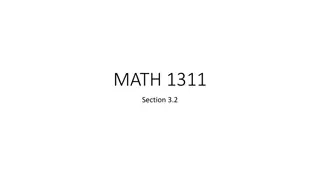Understanding Linear Number Sequences and the Nth Term Formula
In mathematics, linear number sequences can be described using the nth term formula, which helps in predicting sequences and finding specific terms without generating the entire sequence. By understanding the relationship between term positions and values, one can efficiently determine any term within a sequence. Additionally, algebraic methods using inverse operations and variables play a crucial role in solving missing number problems.
Download Presentation

Please find below an Image/Link to download the presentation.
The content on the website is provided AS IS for your information and personal use only. It may not be sold, licensed, or shared on other websites without obtaining consent from the author. Download presentation by click this link. If you encounter any issues during the download, it is possible that the publisher has removed the file from their server.
E N D
Presentation Transcript
Linear number sequences and the nth term formula Revise The term to term rule is useful for finding the next term in a number sequence or finding missing terms within a number sequence. However, it is not an effective way of finding any term in a number sequence. For example, to find the 100th term we would have to write every term up to this; which would create an extremely long sequence and take too much time! When we want to find any term in a number sequence, we need to use a formula that describes the relationship between the position of the term and the value of the term. We call this the nth term formula. Every linear number sequence has it s own nth term formula. Term Position 1 2 3 4 5 6 Term Value 5 14 23 32 41 50 nth term formula = 9n 4 The 100th number in the sequence will be (9 100) 4 = 896 The 134th number in the sequence will be (9 134) 4 = 1202
Linear number sequences and the nth term formula Quiz The nth term formula can also be used to predict sequences in patterns. Circles 1 2 3 Triangles 3 5 7 (2 circles) + 1 = triangles How many triangles will there be when there are twenty circles? Answer (20 2) + 1 = 40 + 1 = 41 triangles
Linear number sequences and the nth term formula Quiz In a linear number sequence that has the nth term formula 5n + 3, what will the 50th term be? 253 253 203 303 Try again! Correct!
Linear number sequences and the nth term formula Quiz In a linear number sequence that has the nth term formula 6n 12, what will the 85th term be? 500 499 498 498 Try again! Correct!
Linear number sequences and the nth term formula Quiz Identify if this statement is true or false. The 125th term in a linear sequence with the nth term formula 8n + 23 is 1033. False False True Try again! Correct! Choose another objective
Express missing number problems algebraically Revise In algebra, we use letters or symbols to represent missing values. These are known as variables. Using inverse operations to find these missing values is a basic principal in algebra. The value of y can be found by using subtraction: 62 35 = y The value of a can be found by using division: 84 6 = a 35 + y = 62 6a = 84 Sometimes, you may have to do two different inverse operations to find a missing number. In algebra, the multiplication sign is dropped to prevent confusion with the letter x, and the division sign is often shown using a fraction line. 5y + 12 = 47 9x 5 = 58
Express missing number problems algebraically Quiz What is the answer to the number riddle? I start with a number. I multiply it by 5. I add 10. I multiply by 2. I end with the number 130. What number did I start with? 11 11 9 10 Try again! Correct!
Express missing number problems algebraically Quiz What is the answer to the number riddle? I start with a number. I multiply it by 4. I add 8. I divide by 12. I add 12. I end with the number 15. What number did I start with? 6 7 7 8 Try again! Correct!
Express missing number problems algebraically Quiz What is the value of d in this equation? 1225 1225 1224 1226 Try again! Correct!
Express missing number problems algebraically Quiz What is the value of f in this equation? 8f - 134 = 538 84 84 85 86 Try again! Correct!
Express missing number problems algebraically Quiz What is the answer to this problem? Dan spent half of his pocket money on going to the cinema. He then helped to wash the car and was given 5.75. He now has 15.80 pocket money. How much pocket money did Dan start with? 31.60 10.05 20.10 20.10 Try again! Correct! Choose another objective
Find pairs of numbers that satisfy an equation with two unknowns Revise An equation must always balance. The expression on one side of the equal sign must make the same value as the expression (or answer) on the other side of the equals sign. 27 + y = 93 The value of y will be the number that adds to 27 to equal 93. The value of b will be the number that is subtracted from 20 to equal 4. 20 b = 44 11 Equations can have more than one variable (missing number). When there is more than one variable in an equation, there are different pairs of numbers which will balance the equation. a 1 b 11 2 3 4 5 6 a + b = 12 10 9 8 7 6 When you are asked to find all the pairs of numbers that balance an equation, it is important to work systematically. Sometimes you might be asked to find pairs of numbers within a criteria. a a b = 9 19 20 21 22 23 24 25 Find pairs of numbers that are whole numbers between 10 and 25. b 10 11 12 13 14 15 16
Find pairs of numbers that satisfy an equation with two unknowns Quiz Which pair of numbers will satisfy this equation? a + b = 2378 a = 1828 a = 1830 b = 550 a = 1828 b = 550 b = 550 a = 1818 b = 550 Try again! Correct!
Find pairs of numbers that satisfy an equation with two unknowns Quiz Which pair of numbers will not satisfy this equation? ef = 96 e = 13 e = 32 f = 3 e = 4 f = 24 e = 13 f = 7 f = 7 Try again! Correct!
Find pairs of numbers that satisfy an equation with two unknowns Quiz Which pair of numbers will satisfy this equation? 7c 2d = 36 c = 12 c = 10 d = 15 c = 12 d = 24 d = 24 c = 9 d = 14 Try again! Correct!
